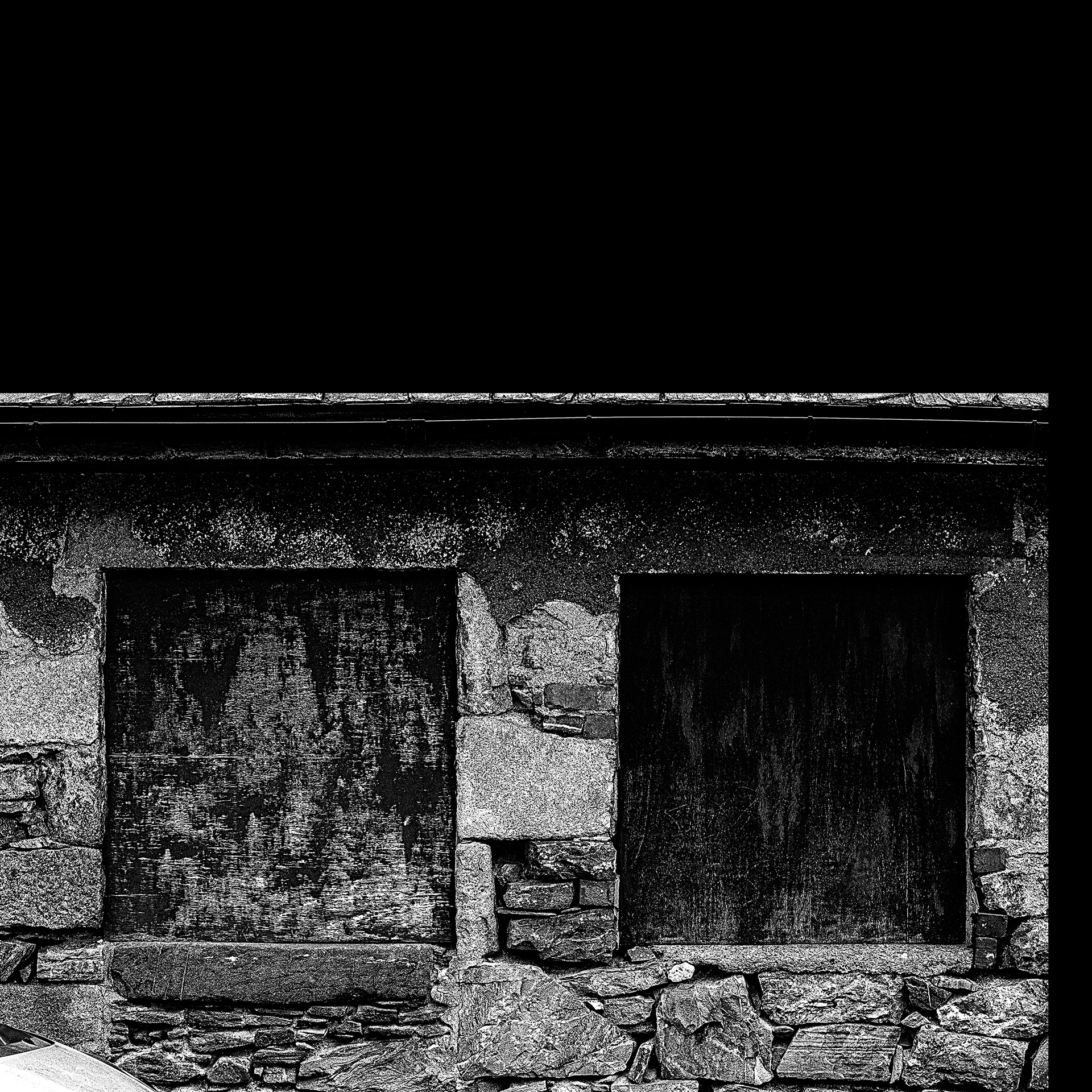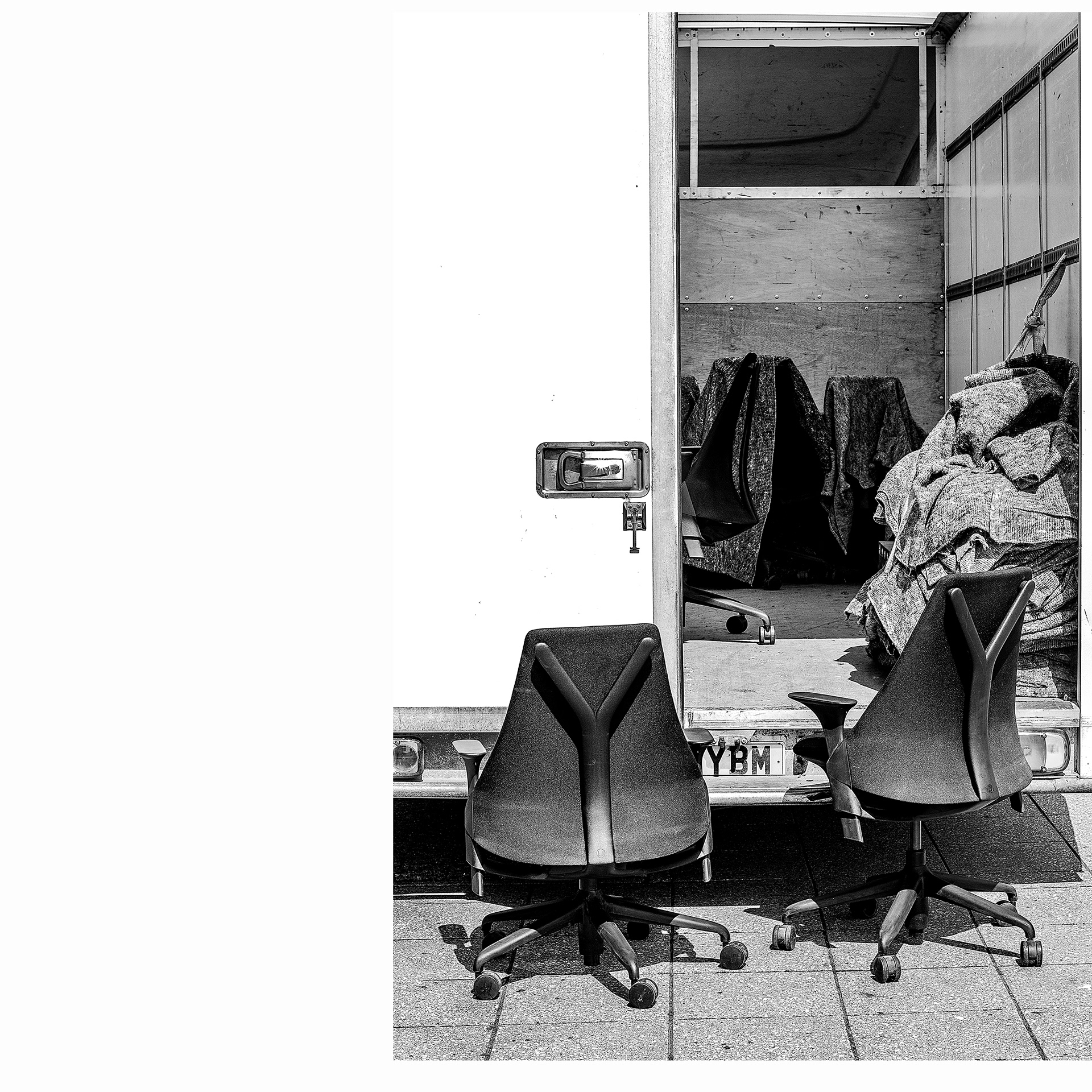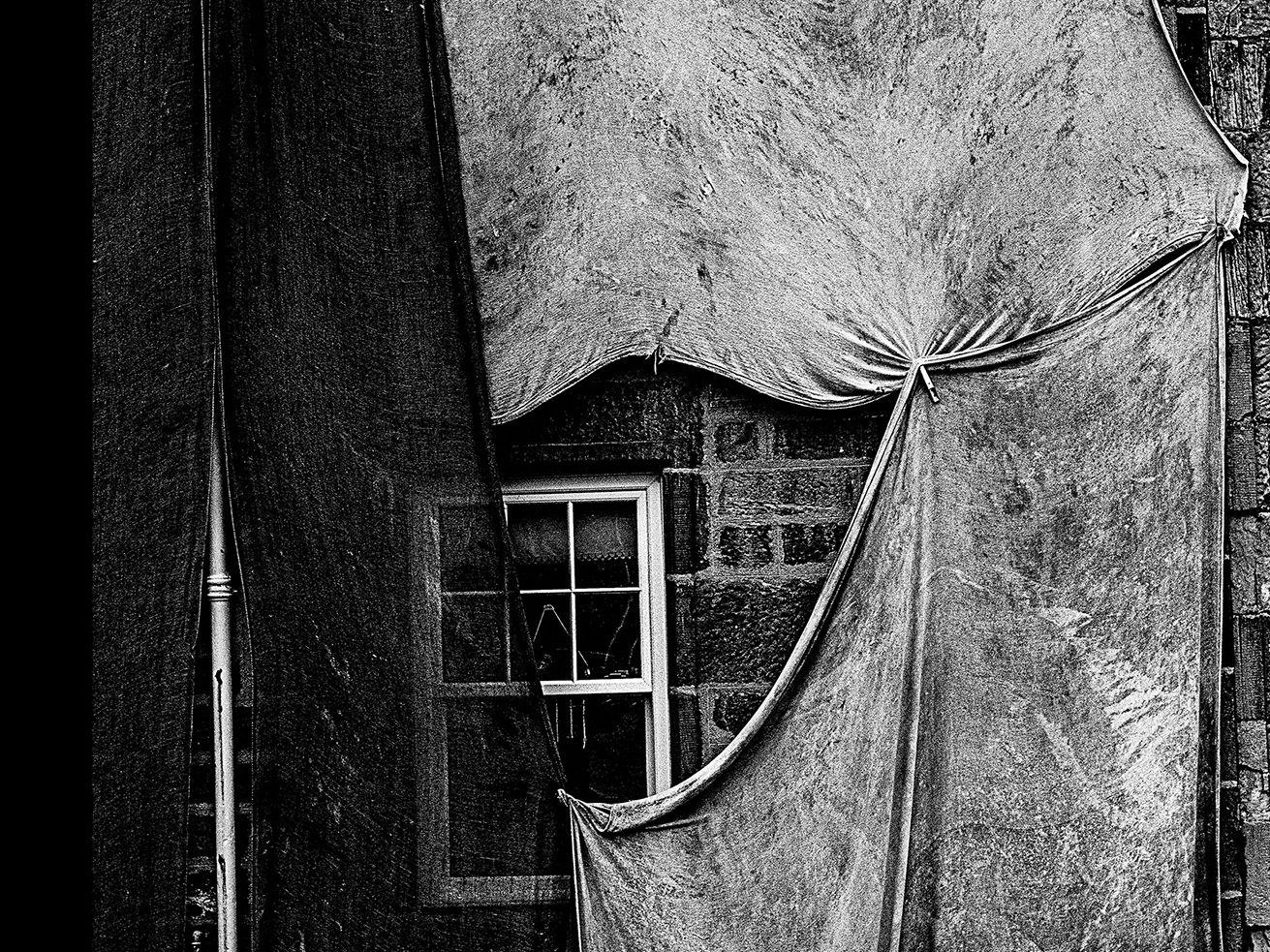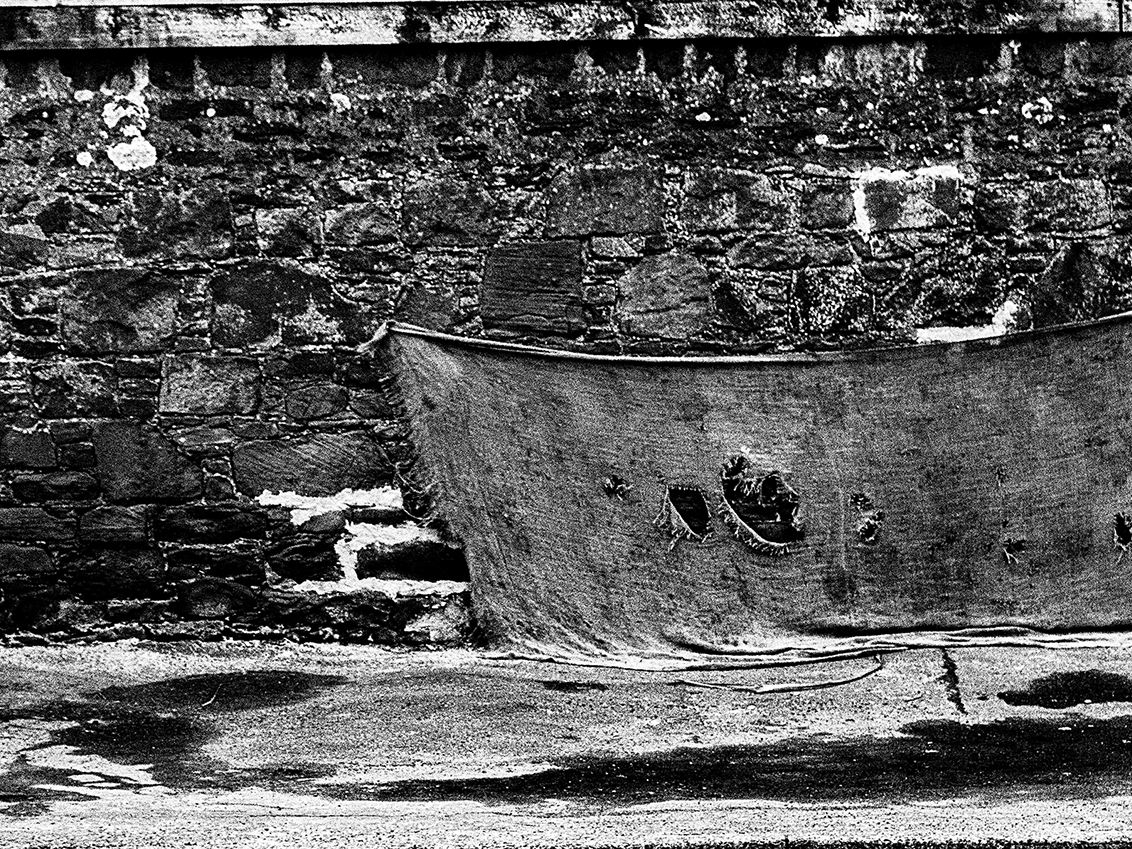“For me, photography is not a means by which to create beautiful art,
but a unique way of encountering genuine reality” ~ Daido Moriyama.
but a unique way of encountering genuine reality” ~ Daido Moriyama.
Monifieth beach
looking towards Dundee
2020
These monochromatic images are currently known as: - "a wander at the edges of the unicorn hunt" - and whilst all of the images in this collection were captured around the same period - namely from - (Summer 20 up until Autumn 21) They are however a less than homogeneous group, encompassing a diverse range of subject matter, that explores all sorts of different areas. Such as: soft fruit farms, harbours, marinas and foreshores, urban and rural landscapes, empty play parks, and a multitude of abandoned spaces and shop fronts in numerous streets of many towns all over the NE of Scotland.
At the moment many aspects of this photography project are still rather fresh and loose in my mind. For that reason, I believe that I need to give these works the necessary space to breathe. Therefore I shall wait for an acceptable period of time to pass, before I even consider reflecting on them again. Distance gained from my initial perceptions and observations will allow me to gradually process and integrate this 'collections' content... imperceptibly distilling it toward memories and new visual ideas.
This creation of a theoretical distance from the work, gives me the opportunity to slowly develop and advance my own personal understanding of it, which in turn, allows me time to consider and explore any concealed or implied meaning that might emerge through careful consideration or direct focus... It's difficult to contemplate which recurring themes or visual patterns - if any - could be hidden away amongst these images. However, in this moment, I believe them to currently be - "non quantifiable."
Meanwhile, this space will essentially become a 'repository', into which I will attempt to organise and curate this rather extensive and eclectic group of images. A strange congregation, gathered here at this particular juncture, around these peculiar sets of circumstances. This "mass of misfits", or to put it in more poetic terms - 'blessing of unicorns' - will be rounded up into a selection of distinct series.
::
::
"Unicorn Hunt" is essentially a 'road trip' collection, where I just travelled around aimlessly, not really heading in any particular direction or looking for anything specific at all. I'd have no predetermined place to be, nor preconceived ideas to implement. Whilst on these speculative photo shoots I would sometimes find myself back in the heart of Dundee revisiting old haunts from an earlier series called "Edges of Riverland" or I would drive across the Tay Road Bridge and head into the kingdom of Fife.
I would often chase landscapes all across the back roads of rural Angus, and have vivid memories of the gentle climbs up the 'Caterthun' hills to capture distant storms near Aberdeen from the 'Iron Age' forts up there. There were perilous twilight walks along the arabesque Arbroath coastline and clifftop to get closer to the strawberry farms near Auchmithie. I sometimes meandered around the St Cyrus nature reserve near Montrose, and occasionally enjoyed the solitude of walks along Monifieth beach with its panoramic view out across the bay, by the mouth of the River Tay and over towards Dundee.
On these numerous excursions, I was inevitably drawn into the smaller towns, where I could wander around the main centres, back streets and perimeter edges in pursuit of an elusive "unicorn". Places such as Brechin, Forfar, Montrose, Carnoustie and St Andrews. There were also regular trips up and down the North East coastline on family journeys up to Moray. Which just happened to be a great base for exploring similar sized places like Forres, Elgin, Dufftown, and Inverness. I also spent some time exploring in and around the marina at Lossiemouth and the harbour and foreshores in Arbroath.
::
The transience of these various road trips possibly contributed to the growing sense of entropy and impermanence I was encountering during these zigzagging journeys to and from those worn down outposts. In retrospect, a number of those abandoned places no longer even remotely represented the halcyon days of their former pristine states and were merely 'doppelgangers' at best 'apparitions' that were in effect, either occupying or about to enter, a slow and steady decline toward dereliction.
This led me to explore more closely what lay within the deeper textures of these environments. I was interested in creating a visual representation of this subject matter. However, I didn't want to simply follow the well established route of reproducing photographic images as a form of documentation, in combination with a piece of descriptive or historical text. I did however want to discover a middle way and attempt to record this 'disintegration' in a less descriptive and more surreal or poetic way.
Subsequently, I gave myself the weird task of documenting these 'vagabonds' - before they drifted from our perception altogether into some irreversible state - where any actual meaning that might have been discernible, may as well have been hidden behind a force field of distortion, destined to be perpetually ignored, completely unseen and slowly fading away into nothingness - into the void?
::
I also consider "Unicorn Hunt" to be the more wide ranging and rambunctious cousin of an earlier collection called - "Edges of Riverland." During that particular project I was staying in a tenement building in Dundee and just happened to be positioned reasonably close to the epicentre of a city wide upheaval that revolved around the construction of the V&A museum designed by Kengo Kuma
At that time, on venturing outside you were immediately exposed to the inescapable cacophony of a place in transition. The sights, sounds and smells of regeneration and demolition - the drilling, the grinding, the dust, the grime - all these aspects impacted upon you in subtle ways as you progressed through the city streets, moving around a constantly evolving 'maze' of construction and destruction
However, within this seemingly random process there was always the chance of stumbling across something of interest, either being built or torn down, with areas of decay and decrepitude being exposed or revealed for the first time - whereas with this collection, despite having shorter periods of time to find something of interest, it was far less hectic with ample time to quietly wander around
::
::
Conversely, a fleeting opportunity can also present itself to you without a moments notice. Many years later, as I was driving through the small town of Monifieth, I had to briefly wait at the side of the road to allow oncoming traffic to pass and just ahead of me stood a stark scene, where an old church building was at that very moment in the process of being demolished. Beyond the mounds of rubble and dust - behind the fluorescent heavy machinery - I could see that all that remained of the original structure was its forlorn 'gable end' - which was teetering solemnly on the edge of the abyss.
This incongruous scene, introduced in me the sudden realisation that this was possibly the first time I'd even noticed that this building existed at all - yet, I had somehow arrived there at that particular point in time, just as it was about to disappear completely. I was strongly compelled to rush home and get my camera and when I returned, I was relieved to find that it was still standing tall, quietly and stoically awaiting its imminent fate. The turmoil had settled down now and the site was silent.
I was able to climb over the fence and take a few last shots - in order to capture the building's final moments - and just before it would slide almost imperceptibly into recent history. What has stayed with me from that experience is that despite having driven past the 'Old Parish Kirk' - hundreds of times over many years, It had barely registered on my visual perception, or even in my memory. Yet, somehow I was still there to witness its final moments - as the next day I drove past and it was gone.
::
Angus 2020
My general approach when I find an interesting new location is to wander around at a normal pace, slowly scanning in a detached sort of manner, not thinking about anything in particular, just patiently waiting for something to quietly stimulate my interest. It could be a simple geometric arrangement or faded text on a grungy old wall - an unexpected surprise element or a even a sudden poetic insight.
It's important to state that 'works' taken using this method aren't documents, as such, since they will inevitably be imbued with my own aesthetic preference and compositional choices that 'always' take place during the post production process. There are also added layers of complexity at play too - in terms of any psychological or emotional aspects that I myself may inadvertently bring to the process.
Unique aesthetic decisions will need to be taken for each individual 'image' and this might possibly colour the mood and determine the character of every single photograph. On some level though I'd like to believe that I have tried to remain relatively neutral throughout this whole process - in order to - carefully and honestly walk the fine line between - the objective and the subjective, between the 'factual' (raw material) and the 'fictional' (post processed image) - but, that's not for me to determine!
::
”Photographs are not a record but a created reality.” ~ Miyako Ishiuchi
::
;;
My initial intention was to seek out and record the more surreal and offbeat elements that I might find scattered around the many neglected back streets and areas of desolation. The sorts of places where run down old buildings, shop fronts and alleyways can be inhabited by random collections of bizarre objects, assortments of strange and disorientating interiors and weird unexpected situations. The kind of scenes found in these types of environments can - facilitate glimpses into recent history.
Where by allowing the 'observer' to construct their own personal narrative, through an inspection of the patina on a found object or a close study of some torn fragment from a faded poster. Possibly by attempting to decipher myriad graffiti, that scribes, splatters and clings to dirty brickwork and grimy windowpanes. Or scanning the eroded surfaces of pockmarked walls for the ghostly traces of times gone by, that linger on and haunt the weather-beaten facades - giving insight into generations past.
::
::
entropy. [ ĕn′trə-pē ] A measure of the amount of energy in a physical system not available to do work. As a physical system becomes more disordered, and its energy becomes more evenly distributed, that energy becomes less able to do work.
There are numerous connections, in relation to the concept of 'time' to be found recurring in my work. It's a theme that resonates strongly within the subject matter of dereliction and decay that I sometimes seek out. However, it's not just the impulse to record the disappearing elements of the recent past that entices me to these dingy, forsaken and out of the way locations, it's also the subtle aesthetic that can exist there too - the under appreciated beauty that's just waiting to be discovered
This idea that the poetic and the beautiful can inhabit these types of places (and objects) may seem unlikely at first. Yet, there's a Japanese concept called 'Wabi-sabi' - that accepts and appreciates the many subtleties and irregularities that could inevitably form and evolve over the life span of (natural or synthetic) - materials and objects. Since, as entropy progresses and the process of disintegration advances it can regularly produce the ideal conditions for the creation of intricate and delicate detail.
These gradual processes can often bring about imperfections... which in turn contribute towards the enhancement and overall authenticity of a subject. Consequently, creating surfaces that can only be developed over long periods of time. 'Wabi-sabi' willingly accepts this process of change and decay without any regret, and recognises these events as positive and ongoing progressions of renewal. Although, as I've previously suggested this outcome can often be too subtle and under appreciated.
"wistful, exquisite beauty that vanishes with time" ~ 8th Century Poem
::
::
"everything in nature is impermanent, imperfect and
incomplete and this is the natural state of all things".
Some of these observations and experiences can sharpen your awareness to the vagaries of time. An encounter with such fragility has the potential to evoke strong emotions, perhaps even the capacity to unsettle the viewer, maybe even having the power to elicit an unfamiliar feeling or even create an oppressive or sinister edge. I have long been interested in these strange and mysterious sensations. The only way to describe such intriguing 'perceptions' is that there's a moment of recognition present - maybe even a momentary glimpse into the spaces in between?
This may seem like a rather absurd and abstract idea, however the Japanese people have created a specific term for this concept of 'negative space'. Where in their culture and arts this idea is called 'Ma'. Traditionally 'Ma' referred to the importance of the empty space within a piece of art, which in theory carried as much significance as the rest of the work. This was implied by gently guiding the observer to focus on the purpose or the intention of the negative space within the overall artwork.
As a consequence, 'Ma' often refers to negative space that requires a physical component, one that is literally visible. However, I believe this concept can be extended into our 'perception' of a 'space', We also need to consider this idea in terms of 'sound' too, where 'Ma' also exists within 'intervals' of time. Should we accept this, then the idea of 'Ma' becomes less constrained by any physical 'laws.' Consequently, our intuition and senses become as important a consideration as logic and reason.
:;
The concept of 'ma' - includes the space between things or between
matters, the sense of time, coincidence, or changing situations
::
This concept has been described as:
"the emptiness full of possibilities, like a promise yet to be fulfilled"
or in terms of sound:-
"that little bit between each note - silences which give the form".
Therefore, 'Ma' is possibly best understood as a kind of 'continuum' that
somehow enables different aspects of our 'reality' to co-exist simultaneously.
Thus, creating a distinctive place that permits the objective and the subjective to
intermingle with the realistic and the fantastical - alongside the giraffes and unicorns.
“form is emptiness, emptiness is form”.
;;
::
“We find beauty not in the thing itself but in the patterns of shadows, the light
and the darkness, that one thing against another creates.” Junichiro Tanizaki
::
Although I'm currently intrigued by this Japanese concept of 'Ma', it probably has less to do with any philosophical reason - which is interesting and does stimulate my curiosity - but, is more likely to be connected to the way in which an image, in this case a photograph - either virtually or in a gallery situation - is presented to the viewer. Where in general, the work is confined within a predetermined space, inside an inflexible border (a prisoner to it's original format). It became apparent however after processing multiple images in the initial phase of this collection that this need not be the case.
What I mean by this is: that the 'image' doesn't have to be placed in the static and central position - trapped within the false boundary of the 'frame' - but can be situated - 'in a void' or 'negative space'. Consequently, for this series of 'photos' I decided to experiment with this idea. Since the majority of these works were standard 'landscape' or 'portrait' formats I decided to incorporate a square format as the background - slightly larger than the longest side of the actual image in order to allow a small border to operate. Thus, allowing an element of flexibility and freedom to remain available if needed.
Using this concept allowed me to open up numerous positions in which to situate the finished works. For example, I could place vertical 'portrait' images directly in the centre or with left or right biasis. Or 'landscape' formats may take up horizontal positions right in the middle or with a top or bottom slant. By doing this, each location has the potential to reveal a different aspect of each photographic work. These squares are represented by both black and white backgrounds, allowing each image to blend into the space - as well as providing counterpoints and dynamic possibilities within the image itself...
::
"...making emptiness into a substance itself."
::




::
"... a beat is a moment in the life of a groove" - Wynton Marsalis
::
This is a work in progress









